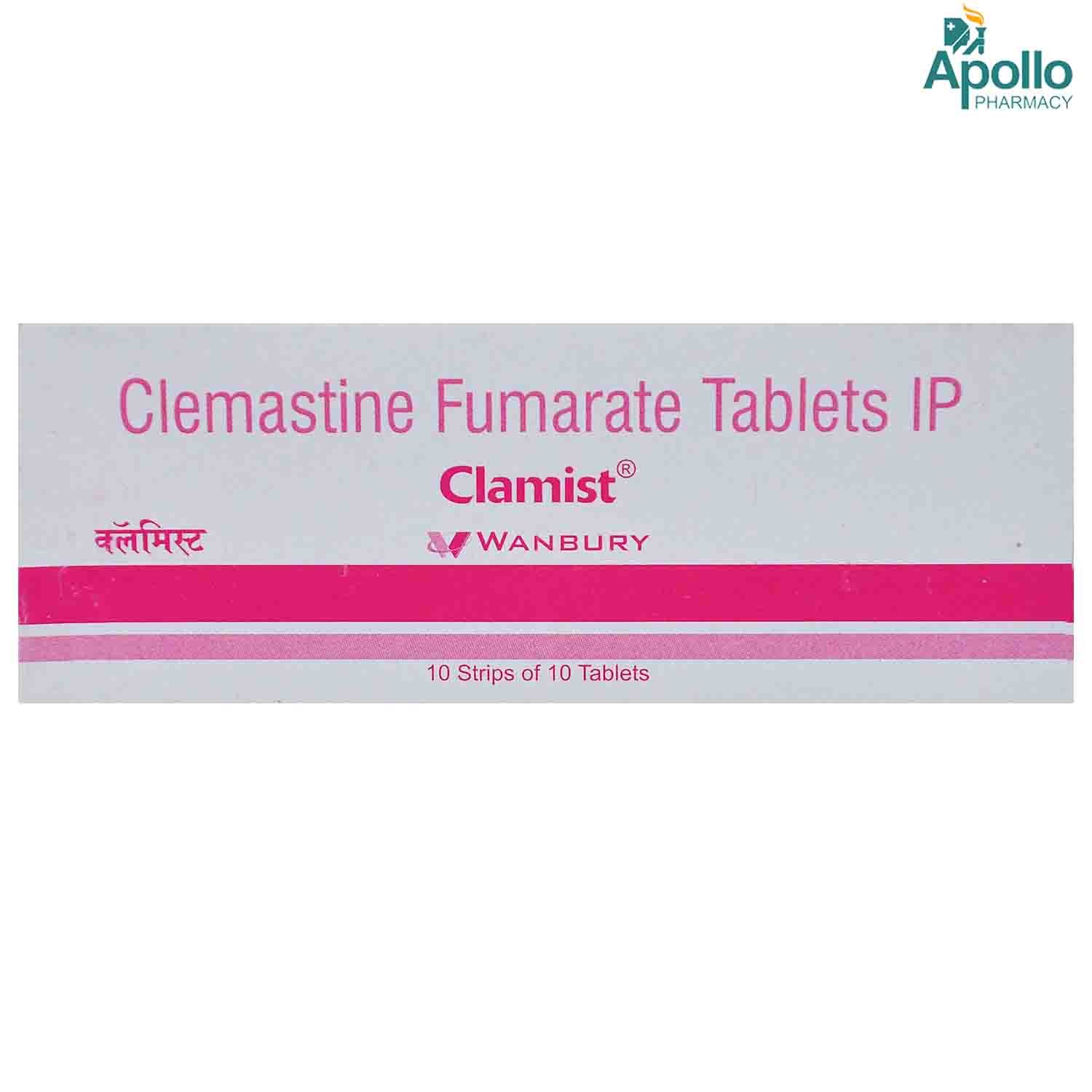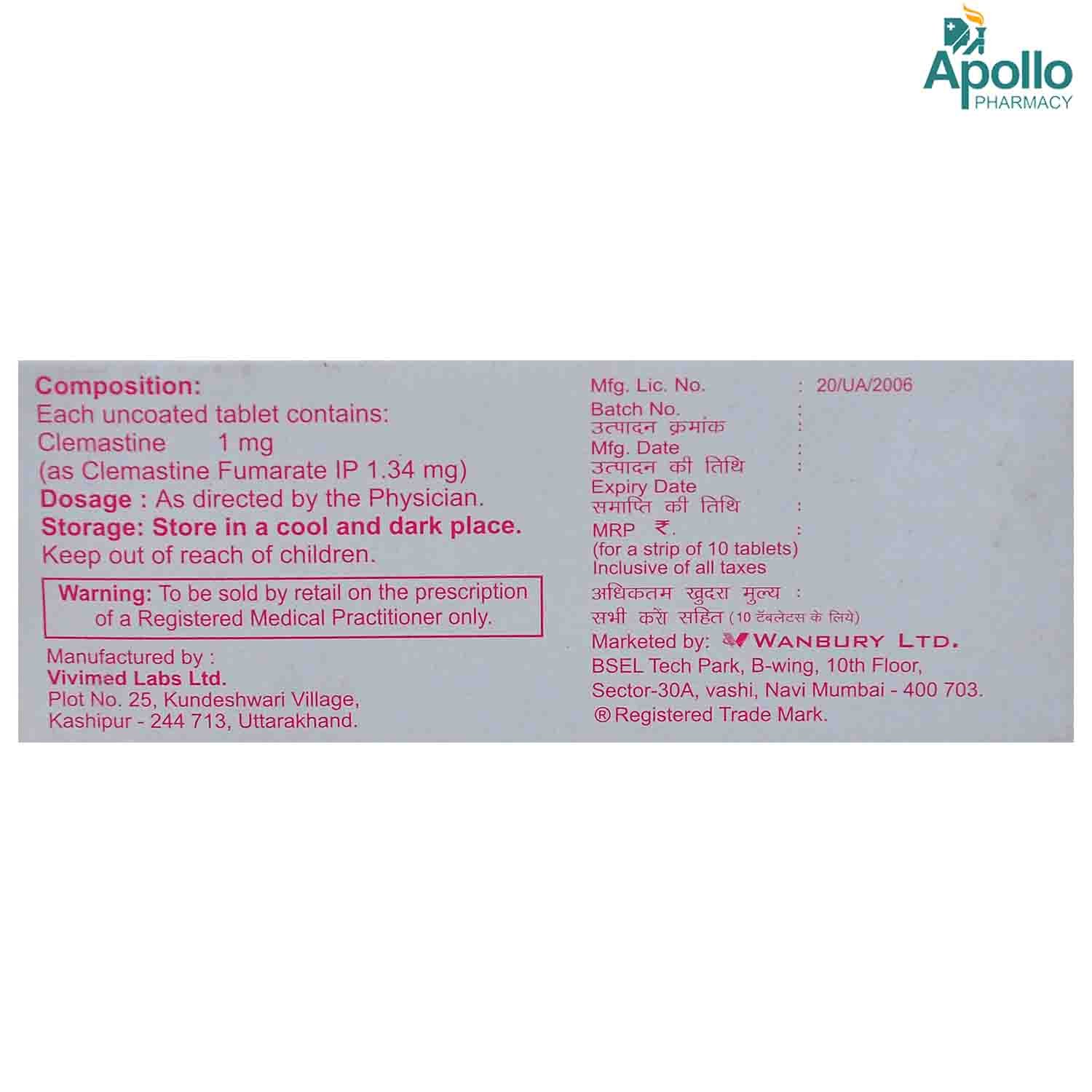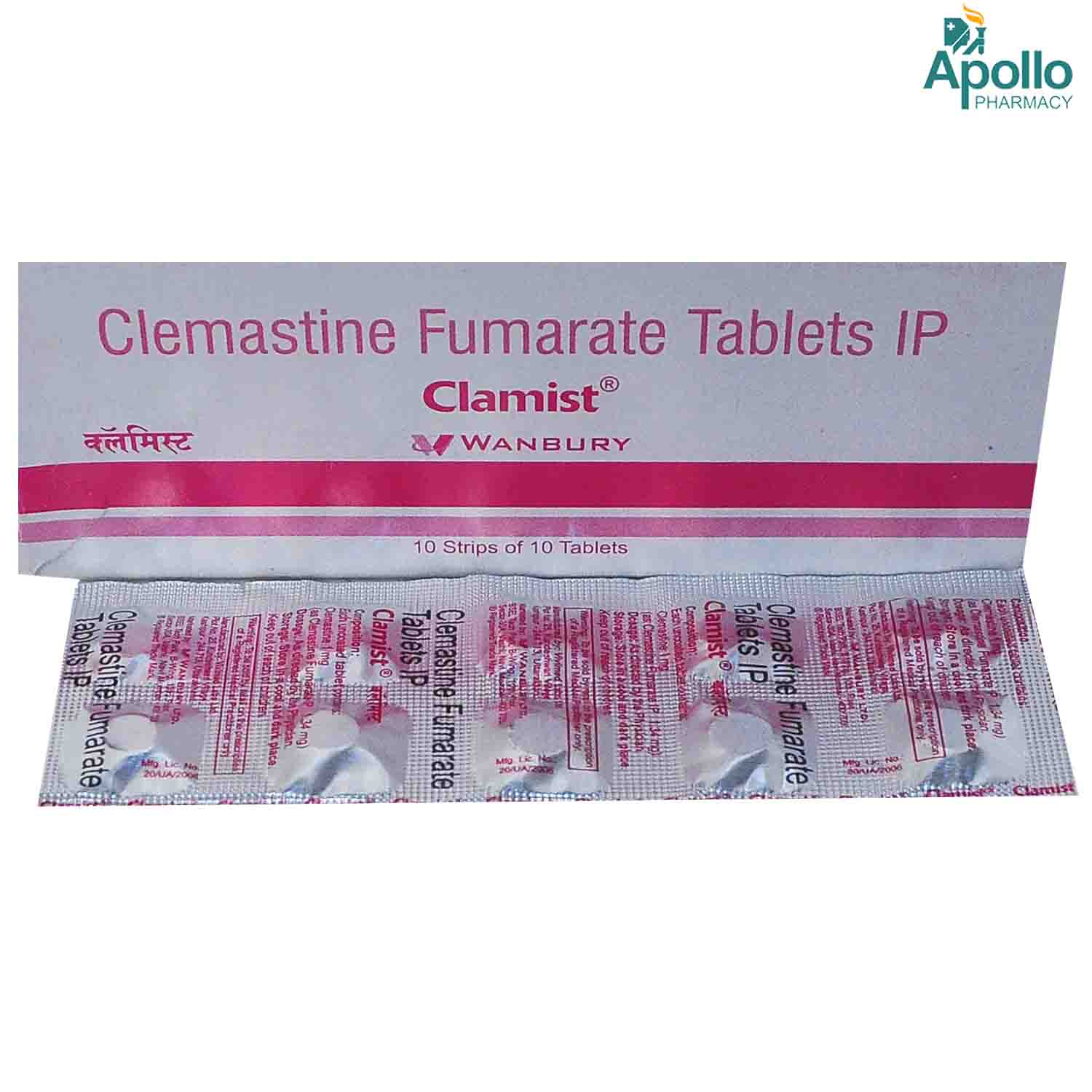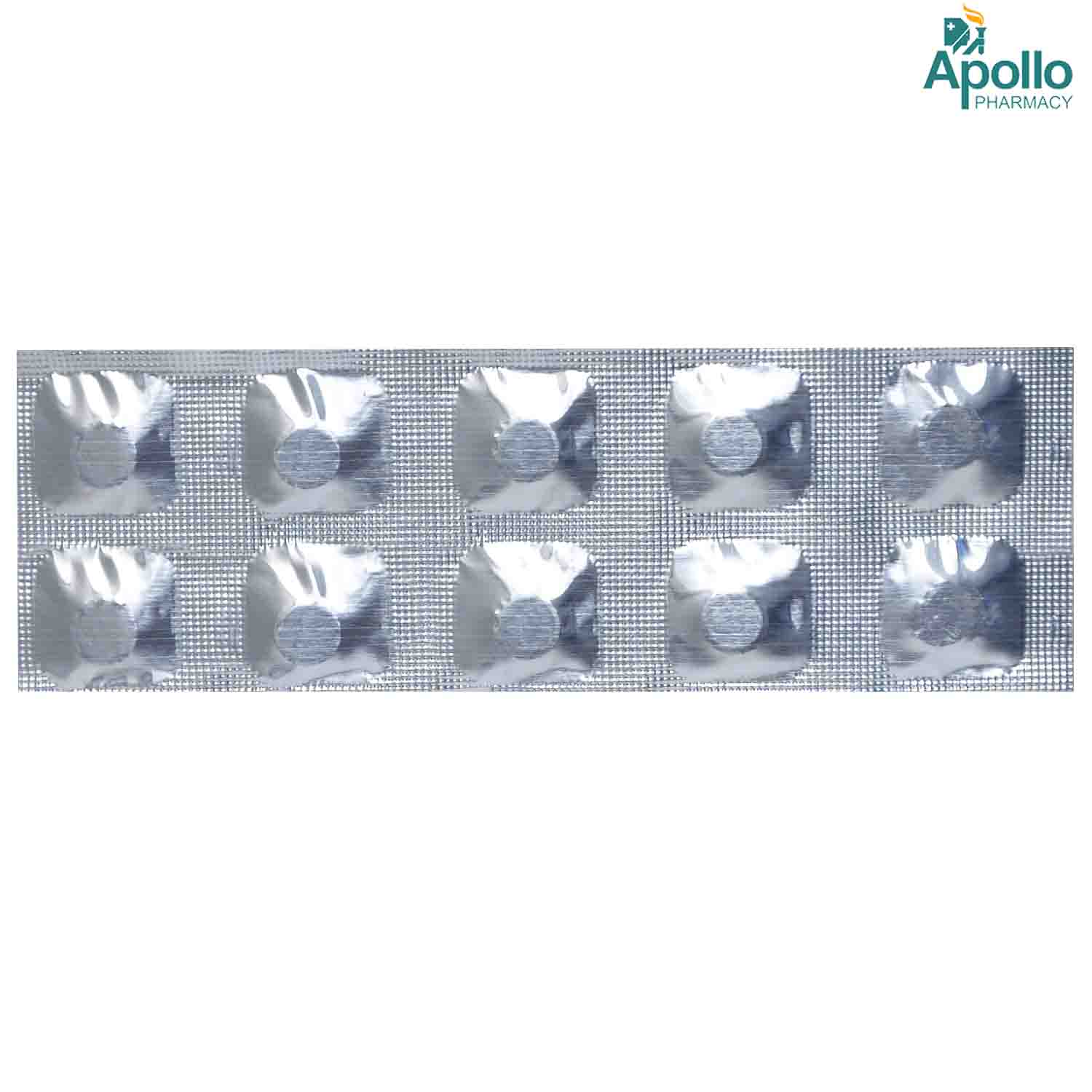Clamist Tablet





MRP ₹108
(Inclusive of all Taxes)
₹16.2 Cashback (15%)
know your delivery time
Provide Delivery Location
Composition :
Manufacturer/Marketer :
Consume Type :
Expires on or after :
Return Policy :

Secure Payment

Trusted by 8 Crore Indians

Genuine Products
Therapeutic Class
Country of origin
Manufacturer/Marketer address
Disclaimer
Alcohol
Safe if prescribed
Consumption of alcohol is not recommended during treatment with this medicine due to the increased risk of side effects such as dizziness, drowsiness and difficulty in concentration. It is advised that you do not perform any activities that require high mental alertness, like driving a vehicle or operating machinery, if you consume alcohol during treatment with this medicine.
Pregnancy
Consult your doctor
Clamist Tablet is not recommended for use in pregnancy unless necessary. All the risks and benefits should be discussed with the doctor before taking this medicine.
Breast Feeding
Consult your doctor
Clamist Tablet is not recommended for use in breastfeeding unless necessary. All the risks and benefits should be discussed with the doctor before taking this medicine.
Driving
Safe if prescribed
Clamist Tablet may decrease your alertness and vision or make you sleepy and dizzy. Do not drive if these symptoms occur. Caution is advised when driving or operating machinery.
Liver
Consult your doctor
Clamist Tablet should be used with caution if you have liver disease. Dose adjustment may be needed. Please consult your doctor before taking Clamist Tablet .
Kidney
Consult your doctor
Clamist Tablet is probably safe to use if you have kidney disease. Dose adjustment may be needed. Please consult your doctor before taking Clamist Tablet .
Children
Safe if prescribed
Clamist Tablet can be used with caution in children only if the doctor advises. But it is not prescribed in neonates.
Product Substitutes
Reference
- https://www.medicines.org.uk/emc/product/6333/smpc#PRODUCTINFO
- https://www.webmd.com/drugs/2/drug-7141/clemastine-oral/details
- https://www.drugs.com/mtm/clemastine.html#uses
- https://www.medicinenet.com/clemastine-oral/article.htm
- https://www.mims.com/india/drug/info/clemastine?type=full&mtype=generic
- https://www.rxlist.com/clemastine-fumarate-syrup-drug.htm#description
About Clamist Tablet
Clamist Tablet belongs to a class of medicines called 'anti-histamine', which are used in the treatment of allergic reactions like allergic rhinitis and urticaria. Allergic rhinitis is a type of inflammation in the nose which occurs when the immune system overreacts to allergens in the air. Urticaria, also known as hives, is an outbreak of swollen, pale red bumps or plaques (wheals) on the skin that appear suddenly, either due to the body's reaction to certain allergens or unknown reasons.
Clamist Tablet contains 'clemastine', belonging to a class of medicines called 'anti-histamine', which are used in the treatment of allergic reactions like allergic rhinitis and urticaria. Which works by blocking the action of certain chemical messengers that are responsible for inflammation, congestion, itching and other allergic reactions.
Clamist Tablet should be taken as advised by your doctor. Clamist Tablet can cause some side effects like dizziness, drowsiness, dry mouth, and changes in vision. These side effects resolve on their own. If it persists, stop taking this medicine and consult your doctor.
You should not take Clamist Tablet if you are allergic to Clamist Tablet . Tell your doctor about other medicines you use other than the Clamist Tablet . Do not use Clamist Tablet without the advice of your doctor. Clamist Tablet should be used with caution if you are pregnant/breastfeeding. Clamist Tablet used with caution in patients with narrow-angle glaucoma, galactose-intolerance, stenosing peptic ulcers ( painful sores in the lining of the stomach, esophagus, or small intestine), prostatic-hypertrophy, epilepsy and asthma.
Uses of Clamist Tablet
Medicinal Benefits Mweb
Key Benefits
Clamist Tablet contains 'clemastine' belonging to a class of medicines called 'anti-histamine' which are used in the treatment of allergic reactions like allergic rhinitis and urticaria. It works by blocking the action of certain chemical messengers that are responsible for inflammation, congestion, itching and other allergic reactions. It is also used in the treatment of angioedema (Painless swelling under the skin, triggered by an allergy to animal dander, pollen, drugs, venom, food or medication).
Directions for Use
Side Effects of Clamist Tablet
- Dizziness and Drowsiness
- Fatigue
- Dry mouth
- Upset stomach
- Nausea
- Headache
- Changes in vision
- Difficulty in breathing or swallowing
- Swelling of the face, lips, tongue or throat
Drug Warnings
You should not take Clamist Tablet if you are allergic to Clamist Tablet . Tell your doctor about other medicines which you are using other than the Clamist Tablet . Do not use Clamist Tablet without the advice of your doctor. Clamist Tablet should be used with caution if you are pregnant/breastfeeding. Clamist Tablet used with caution in patients with narrow-angle glaucoma, galactose-intolerance, stenosing peptic ulcers ( painful sores in the lining of the stomach, esophagus, or small intestine), prostatic-hypertrophy, epilepsy and asthma.Clamist Tablet is used with caution in patients like bladder neck obstruction,porpyria. Clamist Tablet is not recommended for use in newborns and premature infants due to the increased risk of serious side effects.
Drug-Drug Interactions
Drug-Drug Interactions
Login/Sign Up
Taking Clamist Tablet and Potassium chloride(in tablet or capsule form) together can increase the risk of stomach ulcers, bleeding, and other gastrointestinal injury.
How to manage the interaction:
Taking Clamist Tablet with Potassium chloride is not recommended, as it can lead to an interaction, can be taken if your doctor has prescribed it. However, if you experience severe stomach pain, bloating, sudden lightheadedness or dizziness, nausea, vomiting (especially with blood), decreased hunger, dark, tarry stools, consult the doctor immediately.
Taking Clamist Tablet and Potassium citrate (in tablet or capsule form) together can increase the risk of stomach ulcers, bleeding, and other gastrointestinal injury.
How to manage the interaction:
Taking Clamist Tablet with Potassium citrate is not recommended, as it may lead to an interaction but can be taken if prescribed by the doctor. However, if you experience severe stomach pain, bloating, sudden lightheadedness or dizziness, nausea, vomiting (especially with blood), decreased hunger, or dark, tarry stools, consult the doctor immediately. Do not discontinue any medications without a doctor's advice.
Topiramate can cause increased body temperature and decreased sweating, and these effects may be worsened when combined with medications like Clamist Tablet.
How to manage the interaction:
Co-administration of Clamist Tablet with Topiramate can possibly result in an interaction, but it can be taken if your doctor has advised it. If you're having any of these symptoms, like less sweating, feeling hotter, heat stroke, feeling sleepy, dizzy, or lightheaded, it's important to contact your doctor immediately. Do not stop using any medications without talking to your doctor.
Coadministration of Clamist Tablet with Zonisamide can increase the risk or severity of Zonisamide side effects like increased body temperature and decreased sweating especially in warm weather.
How to manage the interaction:
Taking Clamist Tablet with Zonisamide together is not recommended as it can result in an interaction, it can be taken if your doctor has advised it. However, if you experience changes in blood pressure, increased heart rate, fever, or excessive sweating, contact a doctor immediately. Make sure to hydrate yourself during warm weather or after exercise. Do not discontinue any medications without consulting a doctor.
Drug-Food Interactions
Drug-Food Interactions
Login/Sign Up
Drug-Diseases Interactions
Drug-Diseases Interactions
Login/Sign Up
Drug-Drug Interactions Checker List
- PHENELZINE
- SELEGILINE
- ZOLPIDEM
- CHLORDIAZEPOXIDE
- TOPIRAMATE
- IPRATROPIUM BROMIDE
- ATROPINE
- ALPRAZOLAM
- BETAHISTINE
- SODIUM OXYBATE
- ZAFIRLUKAST
- CODEINE
- HYDROCODONE
- LORAZEPAM
- CARISOPRODOL
- CETIRIZINE
- DIPHENHYDRAMINE
Habit Forming
Special Advise
- It is advised to avoid contact with known allergens (allergy-causing agents) such as pollen, dust, etc. Certain food items are known to cause allergies to you.
- Maintain personal hygiene and keep your surroundings clean.
Diet & Lifestyle Advise
- Staying hydrated is vital for those with a cough or cold. Drinking liquids at room temperature can alleviate cough, runny nose and sneezing.
- The immune system is affected by stress and raises the risk of being sick. An individual can exercise regularly, meditate, do deep breathing and try progressive muscle relaxation techniques to relieve stress.
- To stay fit and safe, try to sleep 7-9 hours each night.
- It is advised to avoid contact with known allergens (allergy-causing agents) such as pollen, dust, etc. Certain food items are known to cause allergies to you.
- Maintain personal hygiene and keep your surroundings clean.
All Substitutes & Brand Comparisons
RX
Out of StockTaregyl 1mg Tablet
Novartis India Ltd
₹61
(₹5.49 per unit)
43% CHEAPER

Have a query?
Buy best Anti Allergic Drugs products by
Cipla Ltd
Micro Labs Ltd
Sun Pharmaceutical Industries Ltd
Alkem Laboratories Ltd
Mankind Pharma Pvt Ltd
Dr Reddy's Laboratories Ltd
Lupin Ltd
Leeford Healthcare Ltd
Abbott India Ltd
Intas Pharmaceuticals Ltd
Glenmark Pharmaceuticals Ltd
Morepen Laboratories Ltd
Alembic Pharmaceuticals Ltd
Aristo Pharmaceuticals Pvt Ltd
East West Pharma India Pvt Ltd
Hetero Drugs Ltd
Torrent Pharmaceuticals Ltd
Systopic Laboratories Pvt Ltd
Zydus Cadila
Ajanta Pharma Ltd
Canixa Life Sciences Pvt Ltd
FDC Ltd
Macleods Pharmaceuticals Ltd
Zuventus Healthcare Ltd
Hegde & Hegde Pharmaceutica Llp
Kivi Labs Ltd
Koye Pharmaceuticals Pvt Ltd
Medishri Healthcare Pvt Ltd
Rapross Pharmaceuticals Pvt Ltd
Sanofi India Ltd
Unison Pharmaceuticals Pvt Ltd
Wockhardt Ltd
Biochem Pharmaceutical Industries Ltd
Elder Pharmaceuticals Ltd
Indoco Remedies Ltd
Fourrts India Laboratories Pvt Ltd
Zydus Healthcare Ltd
Amwill Healthcare Pvt Ltd
Bayer Pharmaceuticals Pvt Ltd
Corona Remedies Pvt Ltd
Indiabulls Pharmaceuticals Pvt Ltd
Ipca Laboratories Ltd
Klm Laboratories Pvt Ltd
Olcare Laboratories Pvt Ltd
Talent India Pvt Ltd
Zee Laboratories Ltd
Auspharma Pvt Ltd
Biocute Life Care
Cadila Healthcare Ltd
Dolvis Bio Pharma Pvt Ltd
Entod Pharmaceuticals Ltd
Indchemie Health Specialities Pvt Ltd
Levin Life Sciences Pvt Ltd
Med Manor Organics Pvt Ltd
Pristine Pearl Pharma Pvt Ltd
Rockmed Pharma Pvt Ltd
Troikaa Pharmaceuticals Ltd
Uniza Healthcare Llp
Cadila Pharmaceuticals Ltd
Capital Pharma
Cnx Health Care Pvt Ltd
Eumedica Pharamceuticals
Galcare Pharmaceuticals Pvt Ltd
GlaxoSmithKline Pharmaceuticals Ltd
Knoll Healthcare Pvt Ltd
Medgen Drugs And Laboratories Pvt Ltd
Oaknet Healthcare Pvt Ltd
Seagull Pharmaceutical Pvt Ltd
Skn Organics Pvt Ltd
Unipark Biotech Pvt Ltd
Akumentis Healthcare Ltd
Apex Laboratories Pvt Ltd
Atopic laboratories Pvt Ltd
Aurz Pharmaceutical Pvt Ltd
Biophar Lifesciences Pvt Ltd
Delcure Life Sciences Ltd
Eris Life Sciences Ltd
Gladstone Pharma India Pvt Ltd
Heal (India) Laboratories Pvt Ltd
Inex Medicaments Pvt Ltd
Keimed Pvt Ltd
Kepler Healthcare Pvt Ltd
Lividus Pharmaceuticals Pvt Ltd
Monichem Healthcare Pvt Ltd
Nova Indus Pharmaceuticals
Psychotropics India Ltd
RPG Life Sciences Ltd
Rnd Laboratories Pvt Ltd
SMG Global Pharma
TTK Healthcare Ltd
Vasu Organics Pvt Ltd
Votary Laboratories (India) Ltd
Yaher Pharma
Yuventis Pharmaceuticals
Acclimate Life Sciences
Bioceutics Inc
Biochemix Health Care Pvt Ltd
Brinton Pharmaceuticals Ltd
Chlorophyll Pharmaceuticals
DR Johns Lab Pharma Pvt Ltd


